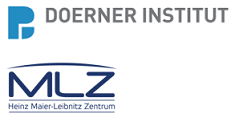Speaker
Description
It is known that conventional materials processing processes at room or high temperatures, such as casting, extrusion, rolling, forging, and etc., can inevitably re-orientate crystalline grains and produce preferred orientation, which is called texture – the distribution function of crystallographic grains with respect to the sample coordinate system. Hence, texture analysis of archaeological metals can help one to understand the technological processes which could be applied on the objects in ancient times.
STRESS-SPEC at FRM II is designed as a state of the art multi-purpose neutron diffractometer for strain and texture analysis. Besides the optimized high neutron flux the available large variability in gauge volume definition systems together with the robotic sample handling option offer high flexibility for bulk or gradient texture measurements. Due to the high penetration depth of neutrons on metals which is in cm range, this is particular essential for the non-destructive texture analysis of archaeological objects as no additional surface treatments of the samples (e.g. polishing) are necessary.
In this contribution we will first present the instrument and its basic methods for texture/pole figure (and strain) measurement. In addition, some successful texture measurements performed at STRESS-SPEC in past years on archaeological objects, such as gold artifacts found at the bronze age rampart of Bernstorf (Bavaria, Germany), Indian wootz blades, iron artifacts, and etc. will be presented.

